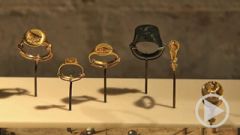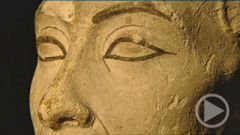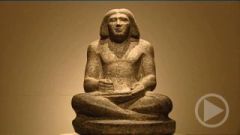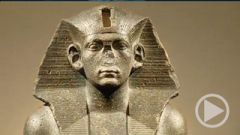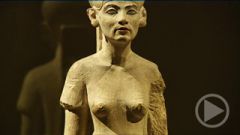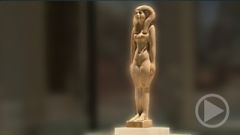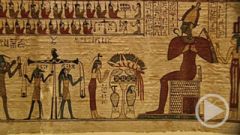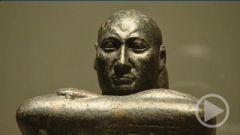- Home
- »
- Germany
- »
- Berlin
- »
- Museum Island
- »
- The Berlin Egyptian Museum
- »
- The Berlin Egyptian Museum - A Walk in the Garden
A Walk in the Garden
"A Walk in the Garden“
In the solar religion of Amarna, the bond between man and woman, between king and queen, was one of the artistic themes used to express the harmony between god and the world. The idea of the couple is elevated to cosmic proportions, and this small, colourfully painted relief gives it an erotic appeal. On the right stands the queen in a translucent, finely pleated white dress. She has a mandrake fruit in her right hand and offers it to the young man standing opposite her. The young king is presented in an extraordinary pose. He's supporting himself on a long stick placed under his right arm, and all his weight rests on his right leg while the left is bent and hangs limp.
The picture shows some kind of medical condition, and considering that this is Egyptian art, the representation is remarkably explicit. This relief is generally thought to represent Akhenaten's successor and son-in-law Smenkhkara and his wife Meritaten. But the starkness of the image leaves room for doubt. There's a lot of evidence to support the suggestion that the relief depicts Tutankhamun and his wife Ankhesenamun, another of Nefertiti's and Akhenaten's daughters. There are other images which show Tutankhamun leaning on a stick, and several strong, shoulder-length sticks were found among the grave goods in his tomb.
In early 2005, CT scans of Tutankhamen's mummy showed an injury to one of his legs, which probably meant that he had difficulty walking. But although the relief takes account of reality in this one extraordinary detail, it nevertheless radiates the spirit of the solar religion of Amarna, according to which the fulfilment of the divine will occur wholly in the here and now.


